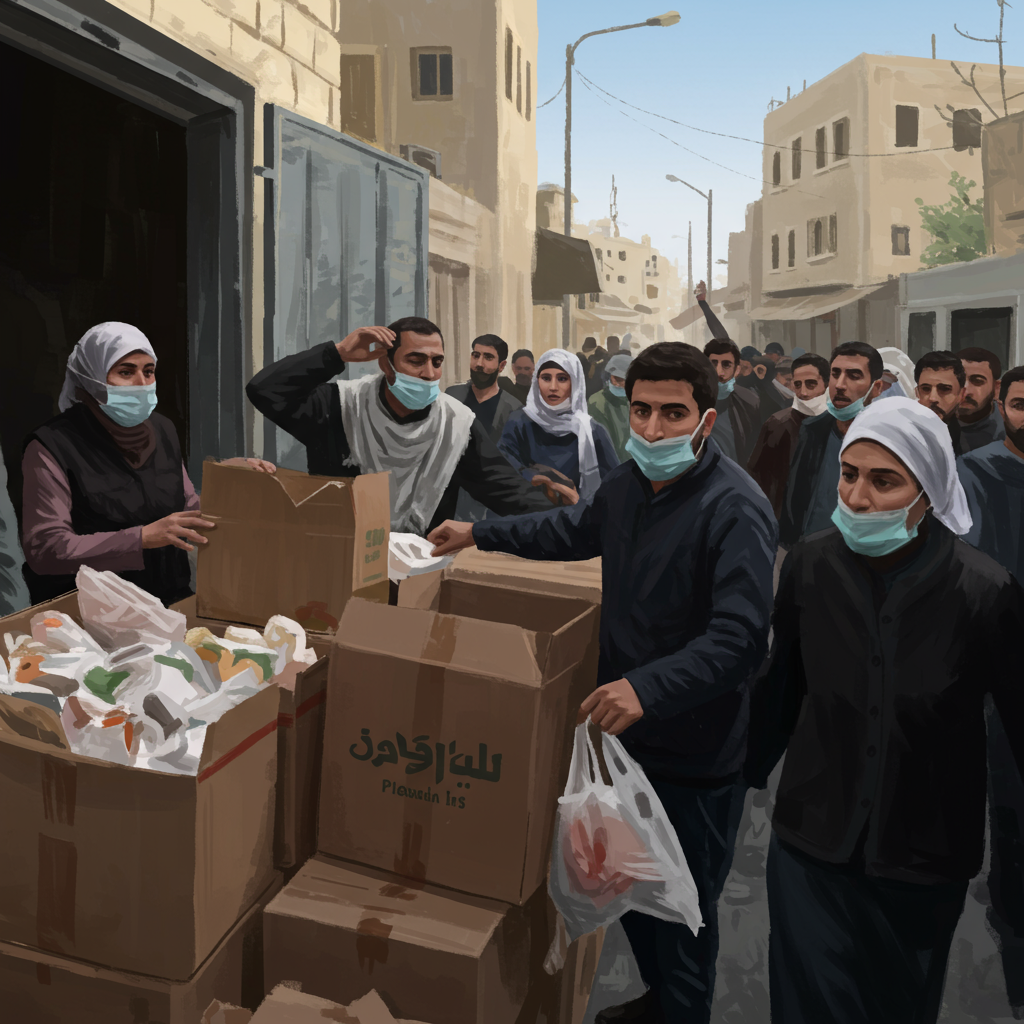In the Gaza Strip, the daily search for food has become a deadly gamble. As a severe humanitarian crisis grips the territory, Palestinians face harrowing risks—including gunfire, violence, and rampant lawlessness—in their desperate attempts to secure even basic supplies for their families. This isn’t merely a search for sustenance; it’s a perilous ordeal where survival hangs in the balance.
Despite a recent increase in aid permitted into Gaza after a 10-week cutoff, United Nations officials warn the volume remains critically insufficient to prevent widespread starvation. What little aid does arrive is distributed through systems described as mired in chaos.
Navigating Deadly Aid Routes
For thousands of Palestinians, the journey to reach food distribution points begins with navigating dangerous terrain, often within Israeli military zones. Witnesses recount crawling forward under fire, facing barrages from tanks, snipers, and drones, as warnings blare. The simple act of raising one’s head can reportedly invite gunfire.
Tragically, this journey frequently results in death and injury. According to Gaza’s Health Ministry, hundreds have been killed and wounded in recent weeks by Israeli gunfire directed at crowds attempting to access aid routes or distribution points. Palestinian witnesses describe seeing people shot in the back or legs, and encountering the wounded or dead along the paths.
One father of three, Mohammed Saqer, likened the experience to the dystopian TV series “Squid Game,” where contestants risk their lives for a prize. He recounted seeing a man bleeding from his abdomen plead for help, only for others to rush past in their desperate race for aid.
The Frantic Scramble for Supplies
Reaching a distribution center offers little reprieve. The majority of aid now passes through points run by the Gaza Humanitarian Foundation (GHF), an Israeli-backed private contractor, often located within military zones. A smaller amount goes to the U.N. and other humanitarian groups.
At these sites, food boxes are often stacked in open areas, leading to a frantic melee as thousands rush in. It’s a chaotic free-for-all where people grab whatever they can – packets of lentils, flour, rice, or jars of Nutella. The scramble is so intense that injuries like trampling are common. Jamil Atili described suffering a knife cut and being pepper-sprayed by a guard during the chaotic rush, ultimately returning empty-handed to his family. “This isn’t aid. It’s humiliation. It’s death,” he stated, his face marked by the struggle.
Both the Israeli military and GHF downplay the violence reported by Palestinians. The military claims it fires only warning shots at “suspects” near forces along the roads to GHF centers and is investigating incidents. GHF denies shootings occur at or near its hubs, attributing incidents to people entering restricted areas before sites open. Palestinian witnesses maintain the firing is heavy and aimed at preventing crowds from moving forward.
Israel intends for GHF to eventually replace the U.N.-led aid network, alleging Hamas diverts U.N. aid – a claim the U.N. denies.
Beyond the Centers: Risk of Robbery
Even securing food doesn’t guarantee safety. Those who manage to leave distribution points carrying supplies become targets for desperate thieves. Lawlessness is rampant, fueled by the overwhelming need.
Witnesses describe seeing individuals, including children and older people, attacked, beaten, and robbed of their meager food hauls. Heba Jouda recounted seeing men beat a young boy and steal his food, and another time, thieves knifing an older man’s arm to take his sack of supplies as he wept, saying his children were hungry.
The risk of theft forces some to take additional dangers, such as climbing over berms or attempting alternative routes, risking being shot by troops monitoring the perimeter, simply to protect the food they fought to obtain.
The Human Toll: Desperation and Lost Empathy
This daily battle for survival is having a profound psychological impact, eroding social norms and empathy. In a world where basic sustenance requires risking one’s life, many feel forced into a mindset where “everybody fends for themselves.” Acts of kindness or help are rare amid the frantic struggle.
For families, the arrival of a loved one back at the tent with even a small amount of food like rice or macaroni is a relief, but it’s often rationed to last days, accompanied by the fear that the dangerous trip will have to be repeated soon.
As one U.N. official grimly put it, the situation feels “apocalyptic,” yet somehow continues to worsen. The desperate, deadly journey for food is a stark reflection of the dire reality facing Palestinians in Gaza amidst the ongoing crisis.




